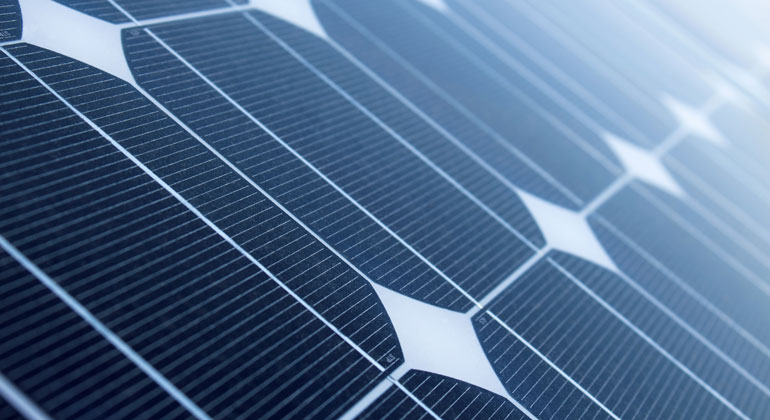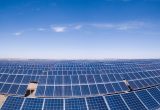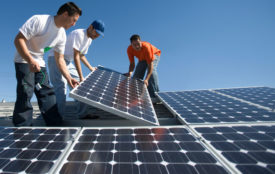Solar energy currently cheapest and cleanest alternative to fossil fuels
The positive effect of solar energy as a sustainable energy source offsets the negative impact of the production of solar panels.
This applies to energy consumption as well as greenhouse gas emissions during the production process, according to a comprehensive study by Atse Louwen and Wilfried van Sark from Utrecht University and colleagues from University of Groningen and Eindhoven University of Technology, the Netherlands. Their research results are published 6 December in the leading journal Nature Communications.
The mass production of solar panels in countries where environmental concerns are not always taken seriously, regularly sparks discussion on how sustainable solar panels actually are. ‘In our study we carefully examined important sustainability aspects of the production and yield of solar panels over the last 40 years. This revealed that solar energy is currently both the cheapest and the cleanest alternative to fossil fuels’, explains solar energy researcher Wilfried van Sark.
Economies of scale and efficiency
Since the introduction of solar energy in the 1970s, the cost has fallen from roughly €75 to less than €1 per watt of installed capacity. This is partly due to the economies of scale achieved in the industry, as well as to innovations in technology and production. As a result, the consumption of energy and materials per solar panel has declined, while the yield per solar panel has increased.
Greenhouse gas emissions
With respect to greenhouse gas emissions, solar panel production also yields a net benefit. PhD candidate Atse Louwen: ‘Our research indicates that, despite the strong growth in the number of solar panels, greenhouse gas emissions during production are more than offset by the clean electricity these panels produce. We passed the break-even point at the end of 2014.’
Football fields
A total of 300 gigawatts of installed photovoltaic capacity is now available worldwide. This amounts to an area of approximately 1,800 square kilometres (250,000 football fields) of solar panels. These panels are expected to deliver more than 370 terawatt-hours of electricity this year – roughly 1.5% of the total global electricity supply. Van Sark: ‘That may not seem like much, but it already represents a reduction of around 170 megatonnes of greenhouse gasses. And the growth potential remains huge.’
More benefits to come
The net benefit between environmental gains and environmental costs will also continue to grow because solar panel production and technology are still constantly evolving, Atse Louwen says. ‘For example, the silicon wafers, which is the base material used for solar panels, are becoming thinner and thinner, and the cutting process causes less and less material loss. The use of silver for applying the electrical contacts onto the wafers is decreasing sharply as well. Scientific research is also continuously providing new possibilities for more efficient conversion of sunlight into electricity, allowing each sunray to be better utilised.’
This research is part of Utrecht University’s research theme Sustainability. The study was carried out in collaboration with André Faaij (University of Groningen) and Ruud Schropp (Eindhoven University of Technology). The project was co-financed by Technology Foundation STW.
Publication
‘Re-assessment of net energy production and greenhouse gas emissions avoidance after 40 years of photovoltaics development’ A. Louwen, W.G.J.H.M. van Sark, A.P.C. Faaij, R.E.I. Schropp | Nature Communications 7 (2016) 13728 doi: 10.1038/ncomms13728







